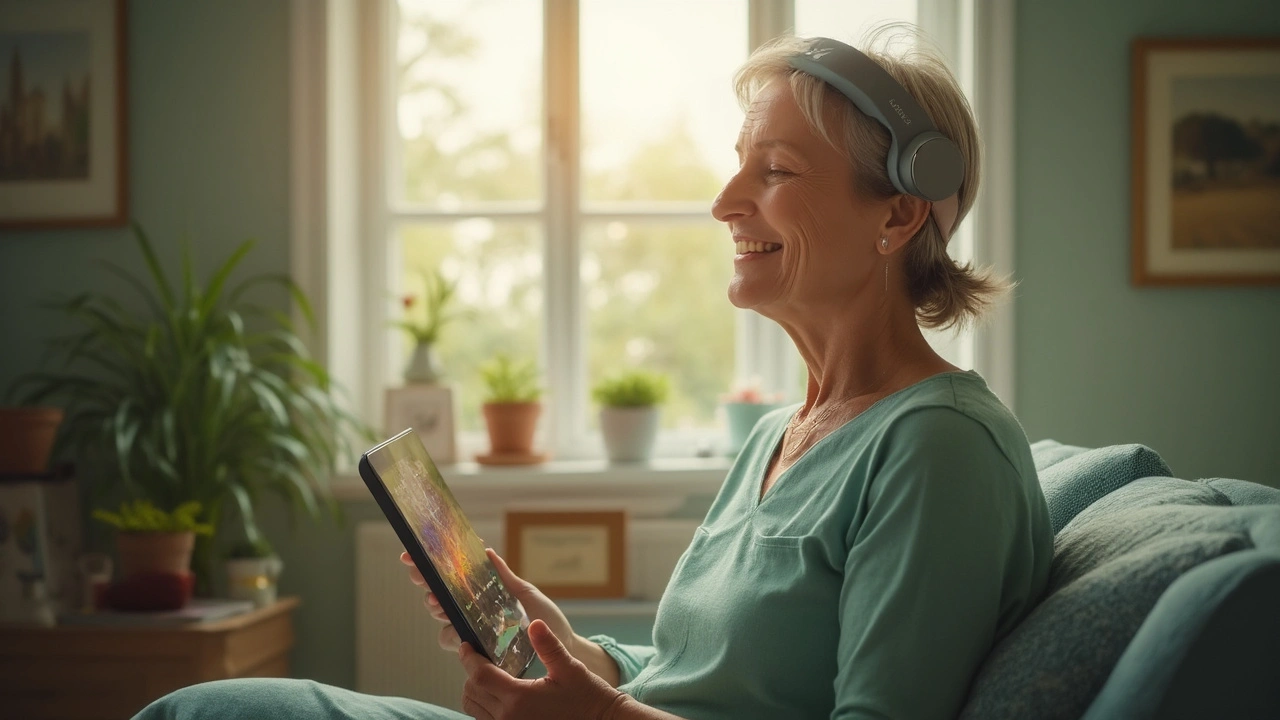If you could look at a computer screen and instantly see how your mind and body react to stress, would it change how you manage your health? People who try biofeedback aren’t plugging into some sci-fi fantasy—they’re using real-life data from their own bodies to improve their well-being. It blew my mind the first time I watched the monitor display my pulse and breathing as I chased after my son, Xavier, playing tag in our backyard. Turns out, biofeedback is a simple but powerful tool anyone can use—not just wellness enthusiasts or people dealing with chronic illness. If you’re tired of relying only on pills and tired advice, biofeedback might be the tool you’ve missed.
What is Biofeedback and How Does it Work?
Biofeedback is a method that lets you get feedback on bodily functions—heart rate, muscle tension, temperature, sweat, even brainwaves—using sensors and monitors. Instead of guessing how stressed or anxious you are, you see it in real time on a screen. The idea is simple but genius: once you know how your body responds to stress or relaxation, you can learn to control those responses. It’s like having a cheat code to calming your nerves or easing sore muscles. People usually picture biofeedback happening in a doctor’s office with fancy machines and a technician watching, but that’s not the only way. Home biofeedback gadgets look like smartwatches or headbands and send data straight to your phone. No lab coat required.
The real magic happens when you figure out how to make the numbers move yourself. Guided by a therapist or app, you practice slow breathing, visualization, or muscle exercises while watching your stats in real time. Over several sessions, your brain learns how to hit the brakes on stress or pain. One study from the Mayo Clinic found that biofeedback therapy reduced tension headaches by more than 50% in many patients treated over a few weeks. And that’s just scratching the surface.
Surprising Benefits You Might Not Expect
Sure, anyone can chill out with deep breaths—but biofeedback trains your body to respond in ways that regular relaxation just can’t match. The list of benefits goes way past stress-busting. For example, did you know that biofeedback can help lower blood pressure? There are sensors that measure your pulse and computer programs that guide you through calming techniques—people often see actual drops in blood pressure in real time. This can mean less medication, which is a huge bonus if you’re worried about side effects.
The technology has been proven effective for people dealing with chronic migraines, jaw pain (TMJ), digestive problems like irritable bowel syndrome (IBS), and even overactive bladders. The American Heart Association lists biofeedback as a recommended therapy for managing hypertension when paired with lifestyle changes. For athletes, biofeedback has been used to hone focus before a big game. Some pro baseball teams even use it to train pitchers not to get rattled in tough moments.
Kids and teens aren’t left out, either. My son’s middle school actually brought in a biofeedback specialist to help a group of anxious students. The kids loved competing to see who could lower their heart rate fastest using breathing games (nothing lights a fire quite like bragging rights). They ended up doing better in class and feeling less anxious at home, according to the school counselor. The beauty of this method is that it works without drugs and doesn’t require years of therapy. It’s direct, visible, and most people start to notice changes in a few sessions.

Modern Biofeedback Tools: High-Tech and Home-Friendly
There’s no shortage of gadgets promising better health these days. But biofeedback tools are in a class of their own because they give you instant, actionable data. Modern biofeedback devices are easier to use than ever. You don’t need wires covering your head like Frankenstein; you just pop on a finger sensor, clip a small monitor to your ear, or strap on a headband. Within seconds, you’re seeing your heartbeat, skin temperature, or even brainwaves on your phone or tablet.
For example, the Muse headset looks like a sporty sweatband, but it actually reads your brain’s electrical activity and helps you meditate smarter. HeartMath devices use a simple finger sensor to give feedback about your heart’s coherence, which is linked to emotional calm. There are even wearable patches that detect muscle tension for people with chronic back or neck pain—letting you see exactly when you’re tensing up throughout the day. No more guessing about what’s stressing you out or tossing and turning at bedtime with no idea why you can’t relax. These gadgets nudge you toward healthy routines without any guesswork.
Even old-school clinics are embracing new tech. Many therapists use digital dashboards and apps to track their patients’ biofeedback progress from home. Insurance companies are starting to support these sessions because the data consistently proves biofeedback helps patients need fewer doctor visits or prescriptions.
| Condition | Biofeedback Success Rate | Typical Number of Sessions |
|---|---|---|
| Chronic Migraine | Up to 65% | 8 - 10 |
| Tension Headaches | Over 50% | 6 - 8 |
| High Blood Pressure | About 50% | 10 - 12 |
| Urinary Incontinence | 70% - 80% | 6 - 12 |
Tips for Getting Started With Biofeedback
It’s tempting to grab the first gadget you see, but start simple. Think about your main goal. Want to manage anxiety or stress? Look for devices focusing on heart rate variability or breathing. Chronic pain or migraines? Go for muscle sensors. Many biofeedback clinics offer a free first session—try one before investing in equipment. Bring your own questions. What symptoms do you want to manage? How often can you commit to practice? After all, learning biofeedback is a bit like learning to ride a bike—you won’t nail it the first try, but the benefits are worth the awkward beginning.
Practice in small bursts. Most people see results by practicing 10 to 20 minutes, a few times a week. That’s less than a single TV show episode. Stick with it for a few weeks. And keep notes. Over time, you’ll spot triggers you didn’t notice before—the way your muscles bunch up when you’re angry at traffic lights, for example, or how your hands get sweaty before a big meeting. Use these insights to course-correct in daily life, even without a device.
If you want more structure, look for a certified biofeedback practitioner. A list is easy to find online. Double-check that they’re affiliated with a reputable group, like the Association for Applied Psychophysiology and Biofeedback. Some schools and community centers offer group lessons, which can be a fun way to get started—especially for kids or older adults who want a bit of social support.

What Does the Future Hold for Biofeedback?
The world of smart tech is pushing biofeedback into new territory every year. Right now, researchers at Stanford and MIT are working on noninvasive sensors that track dozens of signals at once, including mood and cognitive performance. There are even experimental biofeedback systems for people with ADHD that help them stay focused without medication. Imagine games where you win not by tapping buttons but by slowing your breathing or quieting your mind. It’s happening in pilot studies as you read this.
For those managing long-term health conditions, insurance companies and big health systems are starting to bundle biofeedback into their prevention programs. Saves money, makes for healthier people. Not a bad combo. Tech companies are also turning biofeedback into phone and tablet apps that work with no extra gear. You can relax before bed or recharge during a stressful workday just by using your phone’s camera to track your pulse. The future looks promising.
If you’re curious about harnessing more control over your health—without the side effects—biofeedback gives you the data and confidence to make changes that actually stick. You don’t have to take my word for it. Try a session. You might be surprised at what your body can do when you finally get to see it in action.
